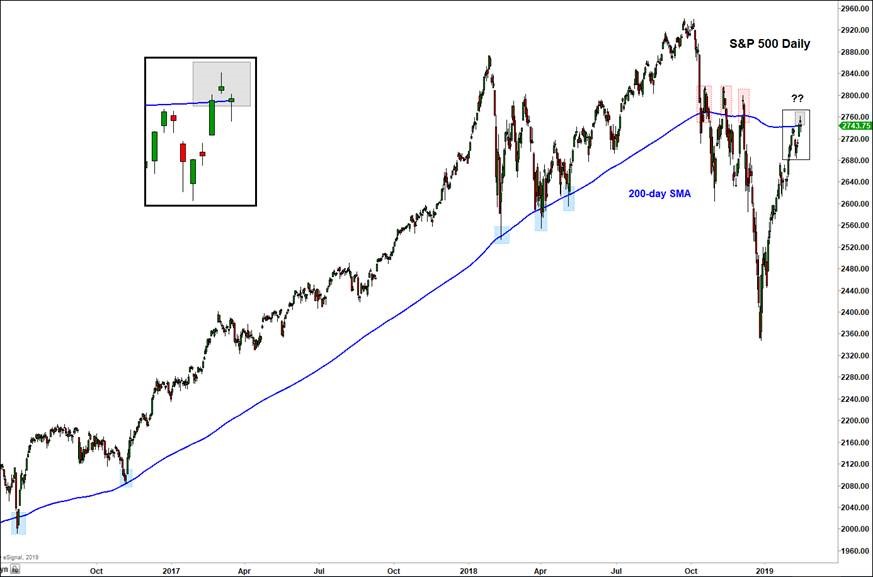Global economic figures showing weak growth across all economic centers, including the United States as the S&P 500 battles a key 200-day SMA, notes Fawad Razaqzada, Market Analyst, Forex.com.
Today’s latest macro indicators from some of the major developed economies have disappointed expectations – quite badly, in some cases – fueling fears over an economic slowdown. The major global indices turned lower, although the losses were limited as investors wondered what this might mean for interest rates. Copper and oil prices also turned red, amid concerns over demand, although along with other risk assets both commodities were bouncing back at the time of writing.
Meanwhile, in FX, safe-haven Japanese yen and Swiss franc both rebounded after their recent sharp falls, while commodity currencies gave up some of their earlier gains, with the Canadian dollar taking a nosedive on poor data out of Canada.
US retail sales slump
After a rather strong jobs report and a decent ISM manufacturing Purchasing Managers (PMI) Index at the start of the month, we have seen some not-so-strong data from the world’s largest economy over the past couple of weeks. Last week the ISM services PMI disappoint expectations, while earlier this week the CPI inflation numbers were not too hot either.
Today, all eyes were on retail sales, with headline number expected to have risen by 0.1% in January. However, the sales data came out well below expectations. Headline retail sales unexpectedly fell 1.2% with core sales dropping even more sharply by 1.8%, causing a knee-jerk negative reaction in both the U.S. Dollar Index and U.S. stock index futures. Today we also had a disappointing jobless claims figure and a weaker Producer Price Index (PPI), although core PPI beat estimates.
Canadian manufacturing sales disappoint again
In Canada, meanwhile, manufacturing sales disappointed expectations and fell for the third consecutive month. The headline drop of 1.3% easily disappointed expectations for a 0.3% month-over-month rise. This is meant to be a leading indicator of economic health, as manufacturers are the first to be affected by changing economic conditions. The fact that their sales have fallen for three months in a row may be an early sign that future spending, hiring, and investment could be slowing down in Canada.
German economy avoids technical recession – just
Earlier this morning, we found out the Eurozone’s largest economy was at a standstill in the fourth quarter of last year. Zero growth means the economy has narrowly avoided a technical recession of two consecutive quarters of falling output, after its GDP had contracted 0.2% in the third quarter. Once again, though, the data disappointed forecasts for a meagre 0.1% growth in Q4. Weak external demand for German cars and other manufactured goods, from places such as China, has held back growth. The GDP data could be revised lower.
With the Eurozone’s largest economy struggling, GDP for the single currency bloc as a whole was never going to beat. Indeed, as expected, Eurozone GDP ‘expanded’ by 0.2% quarter-on-quarter in Q4, meaning that output grew by a meagre 1.2% on a year-over-year basis, down from 1.3% recorded in 2017.
Earlier this week, Eurozone industrial production fell more than expected, by 0.9%, in another sign of weakness in economic conditions. We also had some poor GDP and manufacturing data out of the UK, suggesting Brexit is continuing to weigh on consumer and business sentiment there.
Japan GDP grew slower than expected
The world’s third largest economy is Japan and although GDP grew here in the fourth quarter, the 0.3% expansion in Q4 was weaker than the 0.4% expected. What’s more, third quarter GDP was revised to show a contraction of 0.6% rather than 0.3% reported initially. In other words, Japan’s economy shrank 0.3% in the second half of 2018. So much for the Bank of Japan’s efforts.
China trade figures beat
It wasn’t all doom and gloom, however, as we have had better-than-expected data from China, for once. Here, dollar-denominated exports rose 9.1% in January compared to a year earlier. Although imports dropped 1.5%, this also beat analysts’ expectations. However, it is important to note that the trade data could have only been a temporary recovery due to the Lunar New Year, which fell in early February this year. All told, the fact that imports still fell, even though a larger drop was expected, isn’t a great sign.
Looking ahead
Looking ahead, we will have more data to look forward to on Friday. Among other things, we will have Chinese CPI, UK retail sales and a data dump from the United States including Empire State Manufacturing Index, Industrial Production and Consumer Sentiment.
The next set of important Eurozone data is released next Thursday: the latest PMI numbers from the bloc’s manufacturing and services sectors. Also next week, we will have, among other things, UK earnings and employment data; German ZEW economic sentiment and Ifo Business Climate index; Aussie employment and wages data, and Canadian retail sales. In addition, we will hear from a couple of central bank heads, including ECB’s Draghi and BOC’s Poloz, and have central bank meeting minutes from the Fed and RBA.
All eyes on 200-day average on the S&P 500
The S&P’s latest attempt to break above the 200-day moving average has failed again, but so far there hasn’t been any significant follow-through to the downside. If growth concerns continue to mount, then we will look for a more decisive breakdown in the coming days. For now, dip buyers are hanging in there amid expectations that interest rates remaining low will support the markets. We don’t have too strong a view on the technical direction of the stock markets currently.

Source: eSignal and FOREX.com.





















